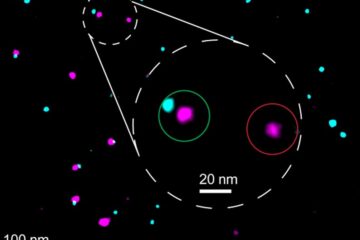Logging doubles threat to the Amazon, rivaling clear-cutting, study suggests

Extent of forest degradation may be twice as high as previously estimated
Human activities are degrading the Amazonian forest at twice the rate previously estimated, suggests a new study that adds the effects of logging to those of clear-cutting. The research appears in the 21 October issue of the journal Science, published by AAAS, the nonprofit science society.
Until now, satellite-based methods for measuring deforestation across large areas have only been capable of detecting clear-cut swaths of land, where all the trees are removed to clear space for farming or grazing.
A new satellite imaging method, developed by Gregory Asner of the Carnegie Institution of Washington and colleagues, detects deforestation on a finer scale, allowing researchers to identify areas where trees have been thinned, due mostly to “selective logging.” In this type of deforestation, only certain marketable tree species are cut and logs are transported offsite to saw-mills. Little has been known about the extent or impacts of selective logging in Amazonia until now, according to the authors.
To detect and quantify the amount of selective logging in the five major timber production states of the Brazilian Amazon, the researchers used the new Carnegie Landsat Analysis System. This technology allowed them to delve into each pixel of the image produced by a trio of satellites and determine the percentage of forested and deforested land within each pixel. (In contrast, the conventional interpretation of a satellite image would consider each pixel as entirely forested or deforested.)
“This method gives us an incredible map of the ubiquitous but very diffuse types of disturbances that exist in Brazil or in any tropical forest,” Asner said.
The researchers found that, from 1999 to 2002, selective logging added 60 to 128 percent more damaged forest area than was reported for deforestation alone in the same study period.
The total volume of harvested trees represents roughly 10 to 15 million metric tons of carbon removed from the ecosystem, according to the authors. They estimate that this amount represents a 25 percent increase in the overall flow of carbon from the Amazonian forest to the atmosphere.
Logging causes major ecological disruptions as well. Vines threading through the trees can pull down large amounts of vegetation when a tree falls. The forest also becomes drier and more flammable, as the shady canopy is thinned.
“Logged forests are areas of extraordinary damage,” Asner said. “A tree crown can be 25 meters. When you knock down a tree it causes a lot of damage in the understory. It’s a debris field down there.”
Media Contact
All latest news from the category: Ecology, The Environment and Conservation
This complex theme deals primarily with interactions between organisms and the environmental factors that impact them, but to a greater extent between individual inanimate environmental factors.
innovations-report offers informative reports and articles on topics such as climate protection, landscape conservation, ecological systems, wildlife and nature parks and ecosystem efficiency and balance.
Newest articles

High-energy-density aqueous battery based on halogen multi-electron transfer
Traditional non-aqueous lithium-ion batteries have a high energy density, but their safety is compromised due to the flammable organic electrolytes they utilize. Aqueous batteries use water as the solvent for…

First-ever combined heart pump and pig kidney transplant
…gives new hope to patient with terminal illness. Surgeons at NYU Langone Health performed the first-ever combined mechanical heart pump and gene-edited pig kidney transplant surgery in a 54-year-old woman…

Biophysics: Testing how well biomarkers work
LMU researchers have developed a method to determine how reliably target proteins can be labeled using super-resolution fluorescence microscopy. Modern microscopy techniques make it possible to examine the inner workings…





















